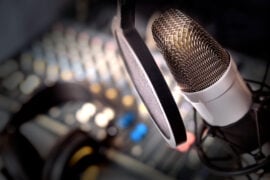In Brief
Recent developments in AI technologies have led to the increased use of AI to create a range of concepts, developments, research, and even lines of software code, in response to human inputs. This has resulted in an uptick of patent applications filed with the U.S. Patent and Trademark Office (the “USPTO”) seeking patents with varying degrees of contributions from AI tools. This calls into question whether, and to what extent, inventions involving contributions from AI are entitled to U.S. patent protection. This question has many underlying issues, but this update focuses specifically on whether AI can be listed as a named inventor on a U.S. patent.
On April 24, 2023, the Supreme Court declined to hear a petition with the issue presented of whether AI can be a named inventor on a U.S. patent. The petitioner had argued that, pursuant to existing precedent, companies cannot list AI as an inventor or co-inventor on U.S. patents and had requested that the Supreme Court review this case and conclude that AI could be named as an inventor or co-inventor. The key takeaway is that applicants for patents currently cannot list “AI” as a named inventor in U.S. patent applications.
Background and Recent SCOTUS Denial
Stephen Thaler develops and runs AI systems that generate inventions. One such system is known as the Device for the Autonomous Bootstrapping of Unified Science or “DABUS.” DABUS is a collection of source code and a software program. In July of 2019, Thaler sought patent protection for two of DABUS’s inventions and filed two patent applications: U.S. Application Nos. 16/524,350 (“Neural Flame”) and 16/524,532 (“Fractal Container”). Thaler listed DABUS as the sole inventor on both applications and wrote on both applications that “the invention [was] generated by artificial intelligence.” Thaler submitted a statement on DABUS’s behalf to serve as the AI’s “oath” and assigned all rights in the inventions to himself.
The USPTO denied Thaler’s patent applications, as they did not list any human as an inventor. Thaler pursued judicial review of USPTO’s decisions under the Administrative Procedure Act, before the U.S. District Court for the Eastern District of Virginia. Before the district court, the parties agreed to have the court adjudicate the challenge based on the administrative record and filed cross-motions for summary judgment. The court agreed with the USPTO and granted summary judgment, concluding that the applications were correctly rejected for not listing a human inventor. Thaler then appealed to the Federal Circuit, which affirmed the district court’s decision.
The Court of Appeals for the Federal Circuit noted that the Patent Act defines “inventor” as “the individual or, if a joint invention, individuals collectively who invented or discovered the subject matter of the invention.” 35 U.S.C. § 100(f) (emphases added). The Federal Circuit noted further that the Patent Act does not define “individual,” but the Supreme Court has held that the word “individual” refers to a human being unless there is some indication that Congress intended a different reading and nothing in the Patent Act indicates any deviation from the default. Further, the court concluded that an “inventor” must be a human is supported by precedent establishing that inventors must be natural persons—not corporations or sovereigns.
Thaler filed a petition for a writ of certiorari with the United States Supreme Court, and the Court declined to hear Thaler’s challenge.
Best Practices
Patent applicants can take steps to ensure that their inventions comply with U.S. patent laws by listing only human inventors in all patent applications. The courts and the USPTO have not provided guidance on whether, and to what extent, AI contributions will impact patentability, and inventors and companies are wise to stay tuned to this rapidly developing area of the law. In the meantime, patent applicants should maintain compliance with current patentability requirements, including with respect to disclosure, written description, novelty, obviousness, and subject matter eligibility. Companies and inventors may consider participating in the USPTO’s upcoming stakeholder listening sessions, details of which can be found on the USPTO website here. We will continue to stay abreast of these developments to keep our clients informed of the latest guidance and regulations, including with respect to working within the evolving legal landscape for AI and managing IP development and protection across multiple jurisdictions.



